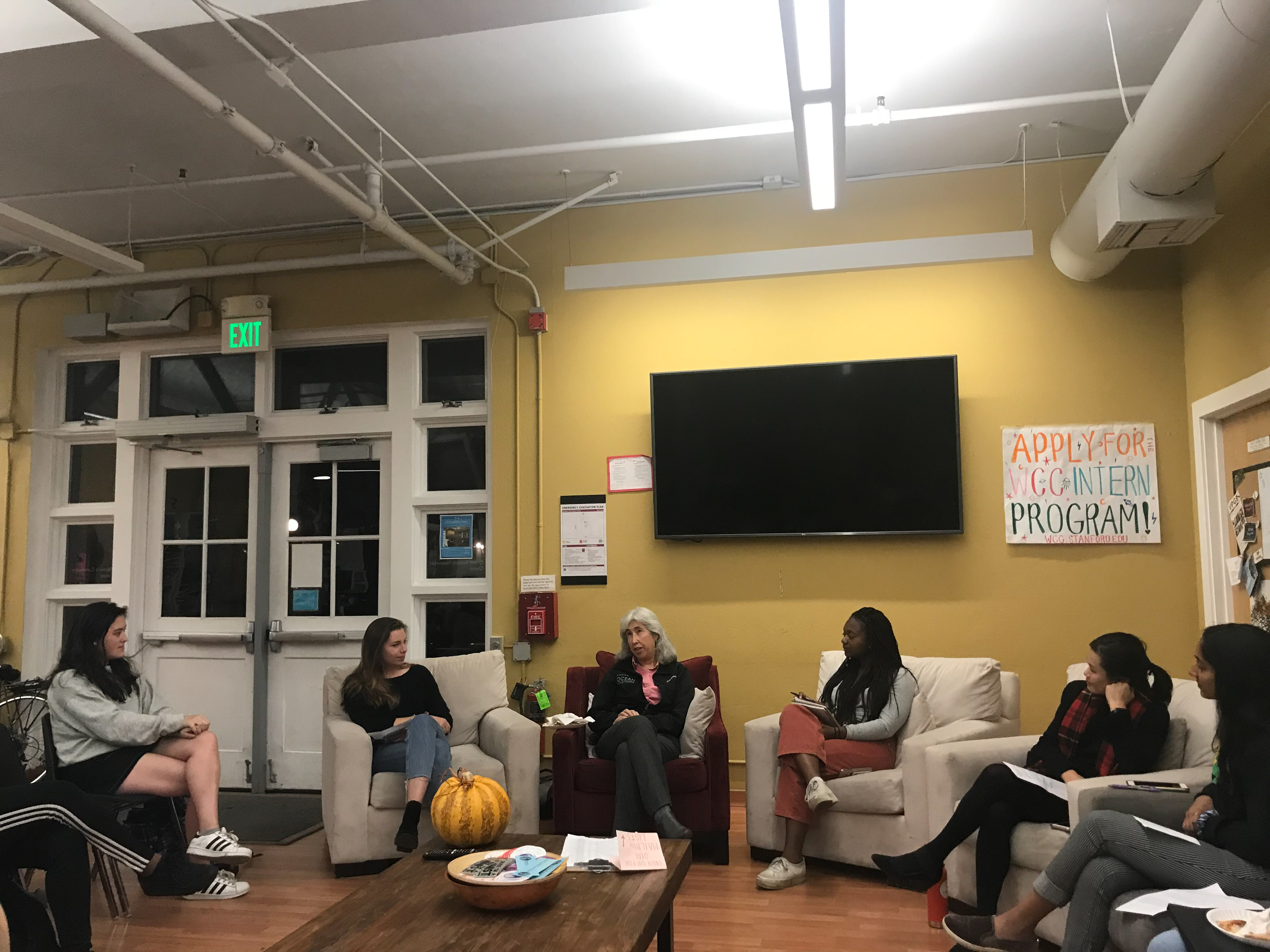This is the third article in a series that The Daily will be publishing this week on environmentalism, showcasing various sustainability efforts across campus.
Coalition building, representing indigenous communities and building activist support systems were at the center of Wednesday night’s panel discussion on environmental justice at the Women’s Community Center (WCC).
Hosted by Stanford Womxn in Law (SWIL) and Students for a Sustainable Stanford (SSS), the panel featured student and faculty speakers.
“For me, there needs to be a change in the way that we think about nature as just a barrier of human pursuits,” said panelist Ayoade Balogun ’21, responding to a question about how the environmental justice movement should evolve in the next few decades. Balogun is the director of strategy for SSS and co-director of environmental justice and sustainability for the Associated Students of Stanford University (ASSU).
Other panelists included Stanford law professor and Environmental Law Clinic director Deborah Sivas and Deland Chan, the director of community engaged learning in the program of urban studies at Stanford.
“We set out to choose a panel that was representative of the ways that one can approach environmental justice work while also being representative of our community,” said Chloe Stoddard ’21, co-founder of Stanford Womxn in Law.
The panelists discussed their different approaches to environmental justice. Balogun focused on coalition building between traditional environmental groups and underrepresented ethnic communities. Chan talked about her class, Sustainable Cities, where students get to collaborate with outside organizations on specialized sustainability projects in the Bay Area. Sivas described her work in the law clinic that is centered around supporting law schools students in providing pro bono services to communities that could not otherwise afford lawyers in environmental cases.
“We’ve been working with Native American tribe up in Redding, California for nearly 25 years now to protect a sacred site that is really at the core of their existence,” Sivas said. “These people — they really see the attempt to take away this site as cultural genocide.”
The panelists reflected on the importance of including underrepresented communities, including indigeous people, in the discussion surrounding environmental justice. For Balogun, conversations around indigenous rights sparked her interest in environmental activism.
“While doing research on renewable energy policy in Mexico, I ran into story after story about land that was flagged as the best for farming, but that also contained the highest densities of indigenous populations,” Balogun said. After coming to this realization, Balogun knew her engineering degree would not be complete without pursuing environmental studies.
Chan was prompted to think more about the relationship between her urban city and the environment after getting involved in a native species restoration project at 16.
Despite taking different avenues into the realm of environmental justice, the panelists all echoed the same sentiment when answering what they found most gratifying about their work: the community.
“I can’t even think about my personal success without thinking about so many of the faces in this room,” Balogun said, gesturing to co-members and classmates she had worked with. “That’s what is so special about student activism. It’s about building a community through healing and supporting one another.”
Chan reflected on her time as a teacher, mentioning that the amazing work that her former students are doing allows her to feel like she has planted a seed for social justice pursuits in future generations.
“My greatest accomplishment is that I don’t have to do this alone,” Chan said.
Acknowledging the space that they were in, the panelists also answered a question about the advice they would give to young women interested in pursuing environmental justice. Chan immediately thought of self care.
“For me, it’s about climbing the long game — sustaining yourself and your ability to do this work in the long term,” Chan said. “Ask yourself if you have eaten, slept and made sure that you have bite sized goals because these issues can feel so overwhelming and hard to tackle.”
The panel came to a close as the speakers shared their expectations for the future of the environmental justice movement.
“I think there will be a sense of urgency that we have not seen before,” Chan answered. “Even with things like the wildfires that are happening, we have to do something quickly because we are going to see the changes happening before our eyes.”
This article was corrected to reflect the proper spelling of the Director of the Environmental Law Clinic Deborah Sivas’s name. The Daily regrets this error.
Contact Sarina Deb at sdeb7 ‘at’ stanford.edu.
